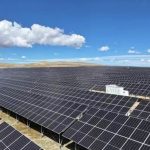As more remote homes, farms, mining camps, and telecom sites move toward energy independence, off-grid solar + battery systems are becoming essential. At the core of any reliable off-grid system is the hybrid inverter — responsible for converting DC to AC, managing battery charging, and ensuring continuous power to critical loads.
However, incorrect inverter sizing is one of the top reasons off-grid systems fail — leading to overload shutdowns, poor battery performance, or excessive costs.
This guide will help buyers correctly size a hybrid inverter for off-grid applications by analyzing load, surge current, battery, and future expansion needs.
✅ 1. Know Your Load: Continuous vs. Peak
Off-grid inverters must handle both steady running loads and surge loads.
| Load Type | Example Devices | Sizing Focus |
|---|---|---|
| Continuous Load | Lights, TV, routers, fans | Daily baseline consumption |
| Surge (Starting) Load | Pumps, refrigerators, power tools, compressors | Peak short-term capacity |
⚠️ Appliances with motors may require 3–6× surge power during startup.
Sizing Rule #1:
Choose inverter ≥ 125% of your total continuous load.
Example
- Continuous Loads: 4 kW
- Required Inverter: 5 kW or above
Surge Rule:
Inverter surge rating should handle 5–6 kW for at least a few seconds.
✅ 2. Battery Voltage and Inverter Power Must Match
Off-grid systems use different DC bus voltages:
| Battery Voltage | Typical Inverter Power Range | Use Case |
|---|---|---|
| 24V | 1–3 kW | Small cabins, RVs |
| 48V | 3–12 kW | Homes, small farms |
| 96V–360V | 10 kW+ | Commercial/industrial |
Higher voltage = higher efficiency, smaller cable size, better for >5 kW systems.
Sizing Rule #2:
For off-grid homes: Minimum 48V system recommended.
✅ 3. Daily Energy Demand Defines Battery + PV Size
While inverter capacity defines power, battery and PV define energy.
Calculate daily consumption:
Daily kWh = Sum of (Appliance Watt × Hours of Use)
Example:
- Avg 6 kW load × 4 hours = 24 kWh/day
To support this:
- Battery: 24–48 kWh (1–2 days autonomy)
- PV: 6–10 kW (geography dependent)
Inverter must handle max load, not total energy.
✅ 4. Surge-Heavy Loads Require Oversizing
Some common off-grid appliances draw high inrush current:
| Appliance | Running Load | Surge Load |
|---|---|---|
| Water Pump | 800W | 2.4–4 kW |
| Refrigerator | 150W | 700–900W |
| A/C Unit | 1.5 kW | 4–6 kW |
If multiple motor loads start together → oversize 150–200%
Consider soft-start devices or sequenced startup to reduce surge requirements.
✅ 5. Hybrid Inverter Charging Capability
In off-grid mode, inverter must recharge the battery using:
- Solar panels
- Diesel generator
- Utility (limited access areas)
Check:
✅ Maximum PV input power
✅ MPPT operating voltage range
✅ Battery charge current
If the inverter cannot charge fast enough → battery will always be low.
✅ 6. Backup Generator Integration
For reliability, off-grid systems often include a diesel or gasoline generator.
Requirements:
- Auto-start capability
- Pure sine wave AC input
- Adequate charge current from generator
Rule of thumb:
Generator output ≥ 1.25 × inverter rated power
✅ 7. Consider Future Expansion
Most off-grid users expand loads over time — EV chargers, freezers, more A/C…
Plan ahead:
- Ensure inverter supports parallel operation
- Modular battery expansion
- Spare PV MPPT input capacity
Hard to upgrade if inverter is already maxed out.
✅ 8. Environmental & Installation Factors
| Factor | Impact |
|---|---|
| High temperature | Reduces inverter power output |
| Dust / humidity | Requires IP65 outdoor enclosure |
| Long AC cable runs | Voltage drop risk |
| Cold climates | Battery heating required |
Always consider:
- Installation protection
- Ventilation
- Operating altitude
✅ Correct Sizing Example: Off-Grid Villa
Load Profile
- Continuous: 6 kW
- Surge: Up to 10 kW
- Daily energy: 35 kWh
Recommended System
| Component | Size |
|---|---|
| Hybrid Inverter | 8–10 kW |
| Battery Storage | 40–60 kWh LFP |
| PV Array | 10–12 kW |
| Battery Voltage | 48V or 96V |
Results:
✅ Handles surge loads
✅ Enough battery for 24–36 hours
✅ Good recharge rate in sunny regions
✅ Recommended Minimum Sizing Guidelines
| Application | Inverter Rating | Battery | PV Array |
|---|---|---|---|
| Cabin / Tiny Home | 3–5 kW | 10–20 kWh | 5–8 kW |
| Rural Home / Farm | 6–10 kW | 20–40 kWh | 8–15 kW |
| Commercial Site | 10–50 kW | 50–200 kWh | 12–60 kW |
✅ Final Checklist for Buyers ✅
Before ordering an off-grid hybrid inverter, verify:
| Question | Yes / No |
|---|---|
| Does it support my surge loads? | |
| Is my battery voltage compatible? | |
| Does it support generator auto-start? | |
| Can it fully recharge batteries daily? | |
| Is parallel expansion supported? | |
| Does it meet required AC output type (single/three-phase)? | |
| Does it have monitoring + EMS functions? |
✅ If all are “YES,” you’re ready to build a reliable off-grid system.
Correct inverter sizing determines system reliability, battery life, and overall cost performance.
Key Takeaways
- Size based on peak load, not only daily consumption
- Battery voltage affects inverter power capability
- Oversize for motor loads and future growth
- Ensure charging sources can maintain full battery cycles
A well-designed hybrid inverter system delivers:
✅ 24/7 off-grid power
✅ Lower fuel consumption
✅ Independence from grid failures
✅ Long-term operational stability









